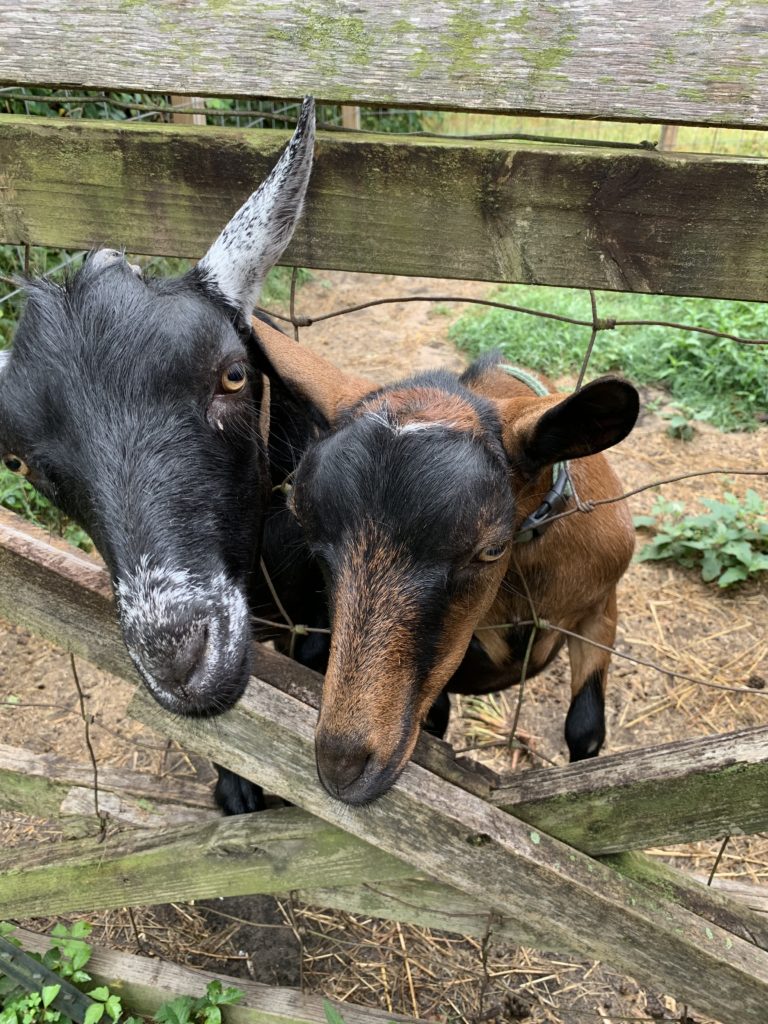Goats in the Garden

By Maria Price
Goats are some of my favorite animals. Here at Beaver Creek Cottage Garden, we have two females and a wether (a castrated male). Allspice and Frosty are half Oberhasli goats; Rose Petal is a Nigerian pygmy.
Oberhasli are a rare breed of Swiss Alpine goats that are mostly brown with black markings. They are known for their sweet-tasting milk and creamy, flavorful cheese. They have a calm, gentle disposition and are prized as strong, reliable pack animals. The Oberhasli is listed as recovering on the Livestock Conservancies Conservation Priority List because numbers have improved globally.
Miniature goats are smaller and easier to handle than regular-sized goats. Oberhasli are good for small-scale family or homestead use. They give less milk, which works out nicely when large goats produce more milk than you can use. The milk from miniature goats tastes sweeter than other goats’ milk because it is higher in fat.
Over the past 40 years, I have used my goats to slowly help clear land, especially underbrush composed of greenbriers and poison ivy. Goats love poison ivy, which is a good thing since, thanks to global warming, scientists say poison ivy is becoming more virulent. The increased carbon dioxide in the atmosphere allows the plant to produce more urushiol, the active compound in poison ivy. Using goats to eat poison ivy and other weeds is a good alternative to herbicides. Just be sure there are no wild cherry trees around as they are toxic to goats.
You can tether goats since they also relish roses and vegetable gardens, and they will put a lot of thought into how to get into your garden. One bonus: their manure is great for the compost pile.
Goats are popular all over the world. They provide companionship, brush control, delicious milk, and soft hair to spin into warm yarn.
Goats are inexpensive to keep, require simple housing, do not need a lot of space and can be as sweet as a dog.
